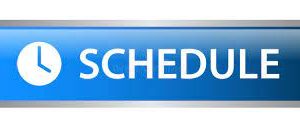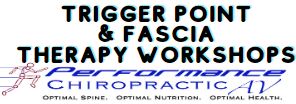Complementary Health Care
Therapeutic Massage is an age-old remedy which has proven to be an effective complement to chiropractic care. Both are holistic in nature, and are based on belief in the innate healing power of the body. Together, chiropractic and massage facilitate the natural healing process by keeping the body in proper alignment and ensuring a free flow of nerve impulses and circulation of fluids.
Problems in the musculo-skeletal system can impede the natural healing process, and often cause dysfunction and pain. Most chiropractic doctors would agree that it is important to treat soft tissues such as muscles and tendons to help prevent and correct subluxations, and lessen the accompanying pain. Together, chiropractic and massage provide you with a more complete and effective system of health care.
Therapeutic Massage:
- Increase the effectiveness of chiropractic treatments
- Aids in preparing the body for chiropractic adjustments
- Helps relieve pain in muscles and related soft tissues
- Helps prevent future problems
Benefits of Massage
The therapeutic effects of massage are recognized by personal and clinical experience, and supported by scientific research. They include:
- General relaxation
- Improved circulation
- Muscle relaxation
- Alleviation of certain kinds of muscular pain
- Improvement in cellular nutrition
- Relief from the negative effects of stress
- Reduction of anxiety
Massage and Adjustments
Local massage is often used in preparation for an adjustment. Massage relieves muscle tension and warms up the soft tissues in the area, making joints more pliable and more easily adjusted. Many chiropractors themselves (or an assistant) prepare an area with local massage.
A general massage (30 minutes to 1 hour long) can also be good preparation for an adjustment. In addition to preparing the immediate area of concern, it helps you relax overall and become more receptive to other hands-on treatment.
Some find massage after an adjustment beneficial for further relaxation. With regular therapeutic massage, chiropractic adjustments may last longer.
Relief and Recovery
The pain which brings you to a chiropractor often involves problems in the musculature. These problems might include:
Nerve Constriction- Nerves run alongside of, between, and through muscles. Tight muscles can squeeze and put pressure on nerves causing constriction, which interferes with the free flow of nerve impulses and sometimes causes pain. Through muscle relaxation, massage alleviates the constriction of nerves due to muscle tension.
Poor Circulation– Tight muscles may also constrict blood vessels, thus slowing blood flow to an area- a condition called ischemia. Ischemia causes pain. By increasing circulation to an area, massage reduces ischemia and therefore the pain it causes.
Trigger Points- Trigger points are specific spots in muscles and tendons which cause pain, and which may radiate pain to a larger area. They are thought by some to be small areas of spasm. Trigger points may be caused by sudden trauma (e.g. from falling or being hit), by repeated use of particular muscle, or may develop over time from chronic muscular tension in an area. Direct pressure with the thumb or fingers on a trigger point will often deactivate it, thus relieving the pain it causes.
Damaged Tissues- Accidents at home, work, play, or on the road can leave bruises, sprains, and other injuries in the soft tissues. Massage improves general and local circulation, helping to clear cellular debris from an injury site, and bringing nutrients needed to heal the damages tissues. Thus massage helps speed recovery.
Pain-Spasm-Pain Cycle- You may get caught in the pain-spasm-pain cycle. This phenomena is started either by pain or spasm in a muscle, which perpetuates itself in an endless loop. For example, you may tense up from pain-this causes more tension-more pain-more tension-more pain and on and on until something breaks the cycle. Massage, often used with ice, helps break this painful cycle.
Therapeutic Massage Helps
Therapeutic massage received regularly helps work out chronic muscular tension. Massage melts away a certain amount of tension in each session, and if received regularly, keeps tension from building up again. It helps you identify and correct patterns of holding tension. You can learn to relax and let go of tension you may not have even been aware of.
Therapeutic massage and stretching can help you regain and maintain proper alignment. When muscles are relaxed and restored to their optimal length, correct posture and alignment are more easily sustained.
Massage can also trigger the relaxation response, relieving the negative effects of stress and restoring balance in the body. Some positive effects of the relaxation response include slower heart rate, deeper breathing, more relaxed muscles, and better internal circulation and digestion.
Arrangements for Massage
Therapeutic massage is often provided within a chiropractic office. In this case, the chiropractic doctor will prescribe massage and coordinate the chiropractic and massage treatments. Insurance reimbursement may also be available.
Therapeutic massage is also available outside of chiropractic offices. You may be referred to a massage therapist by a chiropractor (or vice versa) for a specific problem. You may also make a personal choice to complement your regular chiropractic care with therapeutic massage for a more complete health maintenance program.
Today’s Health Problems
Many of today’s major health problems are caused by chronic stress and conditions of modern living and working. Prolonged mental and emotional stress may lead to tension headache, backache, ulcers, colitis, blood sugar irregularities, high blood pressure, and heart disease. Too much stress has also been proven to impair the immune system leaving us vulnerable to many diseases, and inhibiting recovery as well. Driving or riding in daily commutes, and sitting for long periods of time at workstations tax the body. The repetitive movements required in certain occupations, for example, with some office work (e.g., computer data input, filing and sorting), physical labor (e.g., carpentry, gardening), playing musical instruments (e.g., violin, guitar) and sports (e.g., tennis, golf), can lead to chronic muscle tension, dysfunction and pain.
Muscles shorten with chronic tension. This may lead to loss of flexibility in joints, misalignment and poor posture. Circulation in tense muscles is decreased causing ischemia and pain. Trigger points are common with chronic tension and the pain-spasm-pain cycle may set in.
Glossary
Adjustment- Chiropractic technique in which joints are manipulated to return the body to proper alignment.
Alignment- Correct anatomical position or relationship of body parts, particularly in joints; called posture when referring to the whole body.
Chiropractic- Science and art of natural healing and maintaining health-emphasizes proper skeletal alignment and nervous system function; characteristic manual technique is chiropractic adjustment.
Massage- Manipulation of the soft tissues of the body using techniques such as kneading, sliding, pressure, vibration, friction, and stretching.
Subluxation- a condition of misalignment in a joint and the resulting structural, nervous system, and chemical dysfunctions.
References
Healing Massage Techniques: Holistic, Classic and Emerging Methods. By Frances M. Tappan, San Mateo, CA: Appleton & Lange, 1988.
A Physician’s Guide to Therapeutic Massage: Its Physiological Effects and Their Application and Treatment. By John Yates, Massage Therapists’ Association of British Columbia, 1990.
The Bodywork Knowledgebase: Practitioner’s Desk Refernce. Volume 1 (1959-1988_. Compiled by Richard van Why, 1989.
Therapeutic Massage-Complement to Chiropractic Care written by Patricia J. Benjamin, PhD.
Frances M. Tappan and Patricia J. Benjamin, PhD. Tappan’s Handbook of Healing Massage Techniques: Classic, Holistic, and Emerging Methods. San Mateo, CA: Appleton & Lange, 1998.




FOLLOW US!